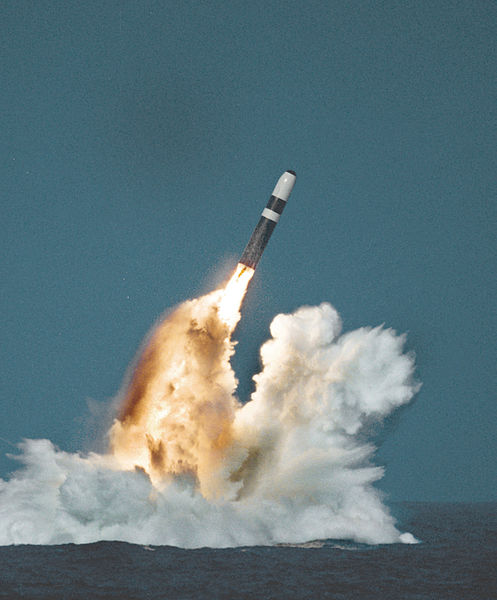
Global Zero: Reduce Nukes, Increase Missile Defense, and Improve Conventional Capabilties
On Wednesday, the group Global Zero issued a report entitled “Modernizing U.S. Nuclear Strategy, Force Structure and Posture.” The report says that nuclear planning for Cold War-style conflicts with an exchange of nuclear weapons is exceedingly unlikely and such planning is a left over from the days of the Soviet Union. The current threats the United States faces today, rouge states, failed states, terrorism, cyber warfare, epidemics or climate change cannot be defended against by nuclear weapons.
The report endorses a new shift in the structure and posture of U.S. nuclear forces. First, the number of nuclear weapons should be decreased bilaterally between the U.S. and Russia to no more than 900 warheads, split between 450 deployed and 450 non-deployed warheads. The shift would also include lifting the hair trigger alert status for U.S. nuclear weapons, increasing nuclear weapons security, and an improving conventional and missile defense capabilities to augment the smaller nuclear force.
Bilateral reductions in nuclear weapons and its corresponding increase in conventional and missile defense capabilities will increase the security of the United States while reducing fiscal requirements for upkeep and modernization. However, the report does include a controversial proposal to scrap all Minuteman land-based ICBMs because they “can only support nuclear wartime operations against Russia” and that ICBMs fired against targets in China, North Korea, Iran, or Syria would have to fly over Russia on their minimum energy trajectories. Land-based ICBMs, the report continues, are inherently targetable and depend on prompt launch after warning to be effective, whereas bombers and submarines do not need to launch quickly and will increase decision time in a nuclear crisis.
The report also promotes the complete elimination of tactical nuclear weapons, a sensible and strategic choice. Tactical nuclear weapons were originally deployed to Western Europe and South Korea to deter a Soviet or Korean attack, respectively. However, since the collapse of the Soviet Union and the overwhelming qualitative military superiority of the South Korean military and American forces in Korea, neither scenario is likely.
Overall, this is an interesting report, and one that is sure to ignite vicious debates within the policy community. It is a good first step towards reducing American reliance on nuclear weapons, realigning defense posture towards today’s threats, and improving national security while reducing the United States’ fiscal burden.
Read the full report here.





